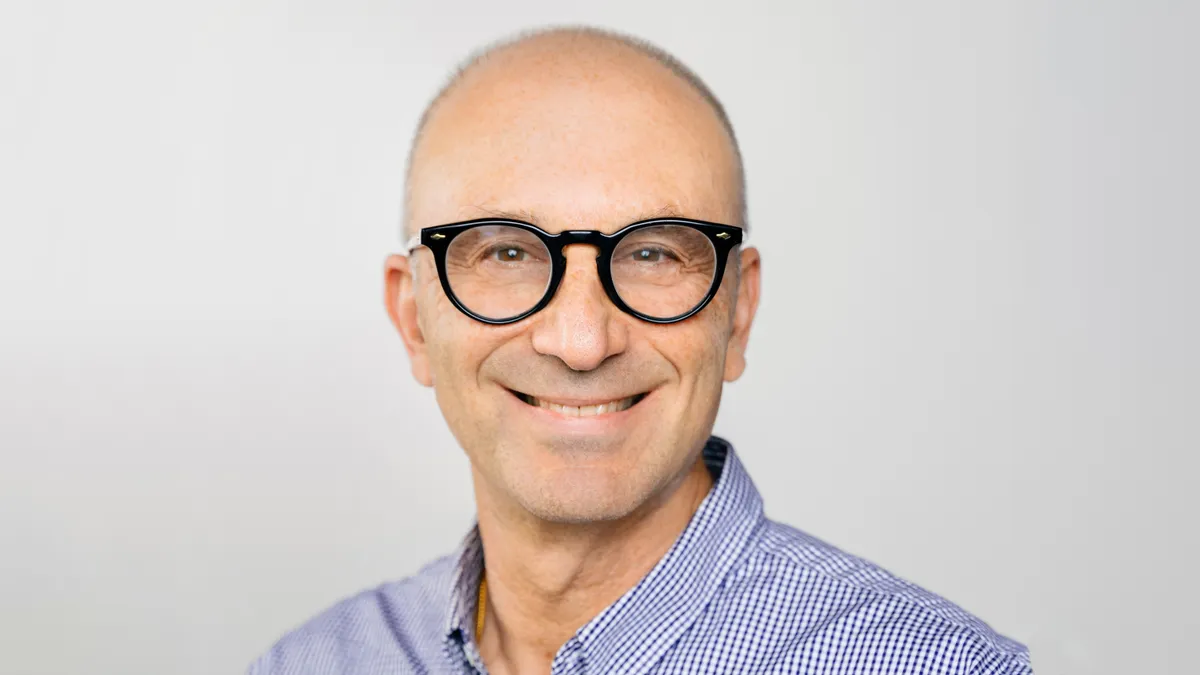Drugs for patients with respiratory diseases like asthma have come a long way in the last few decades. Once treated symptomatically with therapies like oral steroids that come with long-term side effects, drugmakers have narrowed the field to more specific targets.

In Dr. Donna Carstens’ career as a pulmonologist, now senior medical director for the biologic respiratory drug Fasenra at AstraZeneca, she’s seen the field take a full-on paradigm shift from “treat-to-fail” to “treat-to-target.”
This approach led to last month’s approval of Fasenra for the rare respiratory disease eosinophilic granulomatosis with polyangiitis (EGPA) after beating out GSK’s Nucala in a head-to-head study. And while the disease affects a small population, many of whom also have severe asthma, the approval demonstrates Fasenra is a powerful tool more broadly against eosinophils, a type of white blood cell that at high levels causes inflammation leading to other respiratory conditions, Carstens said.
For Carstens, that speaks to Fasenra’s dexterity in the respiratory arena, including the difficult-to-treat chronic obstructive pulmonary disorder. While Fasenra was first approved in 2017 for patients with severe eosinophilic asthma and has since expanded to more indications, the drug stumbled in 2018 in two late-stage trials for COPD.
But AstraZeneca is stepping up to the plate again with an ongoing phase 3 Fasenra trial in COPD — and this time, patients are more selectively chosen for their eosinophil count, powering the trial to play to Fasenra’s strengths, Carstens said. The company, along with partner Amgen, is also seeking a COPD approval for the biologic Tezspire, providing another shot on target.
"This is science, and this is what happens. And that comes down to the eosinophils."

Dr. Donna Carstens
Senior medical director, Fasenra, AstraZeneca
Here, we spoke to Carstens about how the respiratory space has become more geared toward precision medicine, how evolving guidelines have allowed for better patient identification and how those earlier COPD trials paved the way for a more comprehensive understanding of the disease.
This interview has been edited for brevity and style.
PHARMAVOICE: How have you seen the respiratory space change over time?
DR. DONNA CARSTENS: As a pulmonologist since the mid-90s, over that timeframe there has been a tremendous explosion in opportunities to take care of patients with respiratory diseases. And that has really accelerated in the last 10 to 15 years. What was once an approach of adding inhalers or molecules when people fail — what we call treat-to-fail — has now become a treat-to-target approach. Now, we can identify patients who have certain treatable traits and focus our attention and treatment on that particular entity, we can make a better and more impactful difference for patients.
Did the ‘treat-to-target’ approach come about with the wave of biologics for respiratory diseases?
The use of biologics has really changed the outlook for many of these patients with severe diseases, but it’s also been helped by the evolution of guidelines changing and staying in step with innovations. Having GOLD guidelines [for COPD], for example, and the GINA report [for asthma] every year … keeps a finger on the pulse of what needs to be done for patients. To me, it’s a combination of advancing science in conjunction with guidelines that help clinicians know what’s right to do — not just listening to a pharma talk saying ‘ours is the best,’ but taking an unbiased approach to the management of disease. That helps tremendously with the adoption of these therapies.
A disease like EGPA can look a lot like other respiratory diseases — how do you overcome the challenge of identifying the patients who will benefit the most from a drug like Fasenra?
The biggest challenge is, even within severe asthma, the majority of late-onset patients are actually eosinophilic. And with the majority of patients with asthma being managed in primary care, there’s a big, big issue with the recognition of the value of these agents when many of those patients aren’t being referred to a specialist. So one of our goals is to educate around that, helping to understand beyond the brand what those guidelines are. It’s a heavy lift from primary care to understand the different types and severities. And that’s where the majority are being treated with oral steroids, which are very bad — they cause a lot of problems, and when used excessively over years, they can significantly impact a patient’s outcome. We have great data in steroid sparing and hope to change the practice paradigm.
You studied Fasenra head-to-head with GSK’s Nucala. Can you talk about embarking on a risky trial like that and the confidence you had going in?
Since the first study was done by GSK against placebo, the FDA advised that this should be head to head [for non-inferiority]. And yes, there was risk, but we had a lot of confidence in this drug in terms of eosinophil directed therapy. The mechanism of action is much more specific in terms of eradication of eosinophils. And so at the core, the belief was that if you get rid of them as opposed to getting rid of 80% of them, then you likely would have a better outcome. And that’s what happened [with the secondary endpoint for patients who tapered off of oral corticosteroids]. So when you look at endpoints where 41% of patients [receiving Fasenra] were able to completely come off steroids, versus 26% [with Nucala], to me that speaks to the mechanism of action and reinforces what we believe.
Speaking of confidence, COPD has humbled many drug developers in the past, including AstraZeneca. Can you talk about getting past those tough clinical trials a few years ago and where you’re headed now?
This is science, and this is what happens. And that comes down to the eosinophils. With our asthma studies, we did not have an eosinophil requirement, but at least 70% of patients with severe asthma are eosinophilic. That’s not the same in COPD. What we learned in those phase 3 studies was that we had to identify the population that would benefit better. Now what you have with [Dupixent from Sanofi and Regeneron] as a biologic approved in COPD with an eosinophilic phenotype is a higher confidence level for Fasenra. In our ongoing study, which has completed enrollment and reads out next year, ideally for a 2026 approval, we have enriched for that population of 300 and greater eosinophils, a severe population where this is add-on therapy. And this is how we learn — we learn from science with resilience and belief in a product.
The truth is medicine has evolved. Now that we have a drug like Fasenra that targets eosinophils, we are finding that a lot of COPD patients have eosinophilia. We didn’t realize back in the day how much that had an impact. Because we have a tool now, we’ve started looking. If you have a hammer, you look for nails. If you don’t have a hammer — and we didn’t back then — then what’s the point in finding nails? We’ve come a long way in advancing the science and following it to make a difference.



















